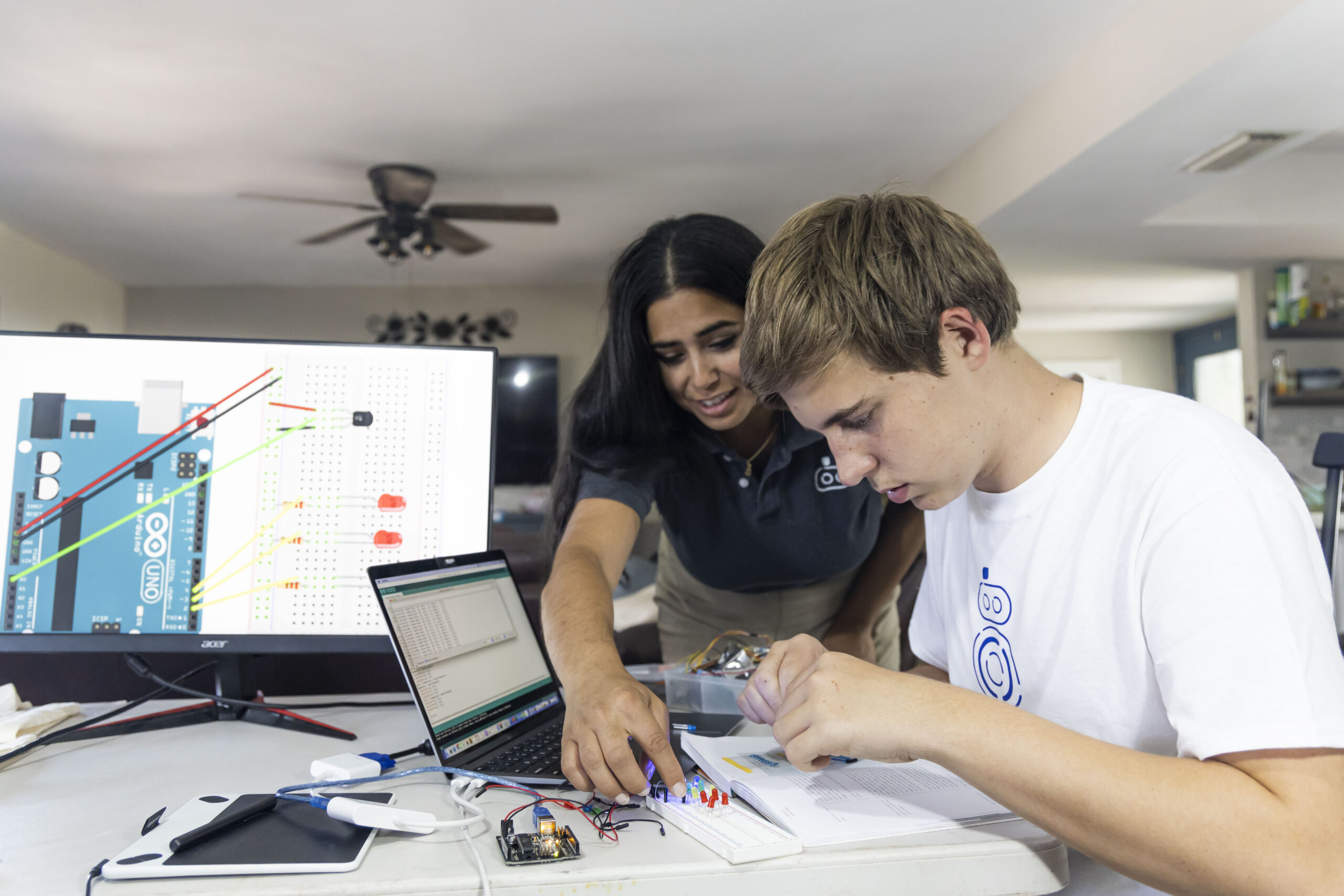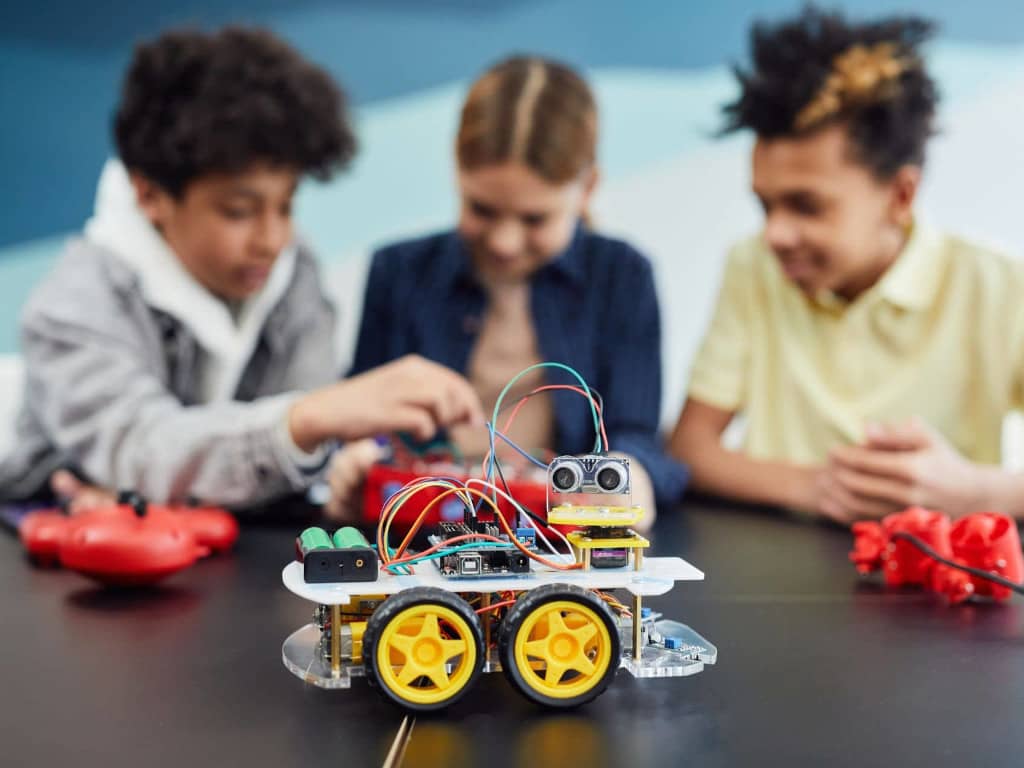Practical Guide of Robotics, its History, and Fantastic Applications
Robotics and its history
The word Robotics refers to the engineering process of design, construction, and use of robots. Robotics may seem an intimidating word because we tend to be associated with cables, electric circuits and many complicated systems. An important fact to know is that the origin of the word robot did not come from a scientist or someone involved with engineering or physics. The word came from R.U.R (Rossum’s Universal Robots), a theatrical play written in 1920 by the Czech playwright, novelist and journalist Karel Capek. In this play, humans make artificial people from man-made synthetic organic matter to perform all the work that humans preferred not to do.
It is worth mentioning Issac Asimov, a science fiction author who used the word robot in Runabout, a short story written in 1942. In this story he devised the laws of robotics and these laws are:
-
First Law: A robot may not injure a human being or, through inaction, allow a human being to come to harm.
-
Second Law: A robot must obey orders given to it by human beings except where such orders would conflict with the First Law.
-
Third Law: A robot must protect its own existence as long as such protection does not conflict with the First or Second Law.
These laws are fictional and they have many problems such as the ambiguity of the language used and we would need to have a huge improvement in artificial intelligence (AI) for robots to be able to follow the laws he formulated. The importance of Asimov laws is that they started the conversation about robotics and raised the concerns and possibility to build robots able to reason and make decisions on their own.
Through time the goals in the field of robotics have evolved with technology development and influenced by factors like industry, entertainment, daily life applications, climate change, and more. Now, let’s explore the applications of the robotics field.
Automation and Robotics Applications
The following applications represent the most important given their impact in our lives:
-
Home
Robots can be helpful friends that can do many things for us, they can be personal assistants playing with our children, projecting films, and doing family errands. They can also communicate with us thanks to voice and video devices, interact with other home appliances, play music, webcast, or read digital books.
An example of home assistant robots is Amazon Astro Household, designed to work with Alexa. This robot can take care of the house when we are not at home. Another example is Ruko Smart Robot, is a robot with 58 programmed actions to play with children. It can play music and dance.
-
Agriculture
According to The United Nations, the world population will reach 9.7 billion by 2050, causing an increase in demand for agricultural products by over 30%. This challenge is one of the topics that science and technology are working on using agricultural robots to increase yield and optimise our natural resources for the third agricultural revolution.
Some examples of these robots are the “Vegebot” which is used for harvesting crops, as well as “Berry 5” a robot that can carry out complex tasks such as grabbing a leaf of a strawberry bush, picking the strawberry delicately, and packing it away safely.
-
Extreme environments
Extreme environments refer to dangerous situations for humans. These environments can be the ocean or volcano depths, zones devastated by earthquakes, chemical and nuclear accidents, offshore maintenance, space exploration and deep mining. In these situations, robots can be helpful because they reduce the risks associated with having people enter hazardous environments and get hurt or killed.
An example of these types of robots are the rovers on the surface of Mars: Sojourner, Spirit and Opportunity, Curiosity, and Perseverance. Another example is Eelume, this underwater robot is designed to perform preparation and maintenance tasks deep in the subsea where no human can reach.
-
Transportation
Lately, autonomous vehicles have become a normal topic as tech companies develop the technology behind these self-driven vehicles. Devices like vision cameras, LiDAR, lasers, digital maps, navigation systems among others, help autonomous cars to find obstacles in a real-time while learning from the data recollected.
-
Social care
The sum of robotics, artificial intelligence, and digital infrastructure are being integrated along with medical professionals and patients to improve the care of our elders and disabled populations.
An example of these types of robots are Paro, a companion robot that looks like a baby seal that works with sensors to monitor sound, light, temperature, touch, and show emotions. Pearl is another mobile robotic assistant for the elderly that reminds people when it is time to eat, take the medicine and can also guide them through their environment.
-
Space satellite navigation and communication
Innovative technologies are helping to achieve the new space age new goals like returning to the moon, exploring mars and commercial space travel. Currently, in the area of space, we count on the technology that works in areas such as earth observation, global navigation satellite systems (GNSS), satellite communications (Satcom), among others. This technology allows us to check CO2 emissions, air pollution, crop health, geo-tracking and guidance of devices like cell phones or self-driving cars through GPS, satellite and cell towers, to establish their position and course to follow.
Emerging technologies in robotics
From a robotic applications perspective, we have emerging technologies that will define our future and they will make a big jump in the present decade. The most important emerging technologies are:
-
Internet of things (IoT):
Internet of things or IoT describes the network of physical objects or “things” embedded with sensors, software and other technologies for the purpose of exchanging data with other devices or systems over the internet. These devices can be household items, cellphones, self-driven cars and even industrial tools.
-
Cybersecurity:
Cybersecurity in robotics has become a concern in recent years since the growth of the robotics field and the risks and challenges that have emerged with it. Some of those challenges are to protect sensitive data collected as well as hacking.
-
Healthcare:
Robots in healthcare have transformed the medical field by becoming more precise and being able to perform surgical procedures, streamlining supply delivery and sanitation, all of these is possible thanks to artificial intelligence. A great example of surgeries performed by robots are hysterectomies, prostatectomies, as well as knee and hip replacements.
Another example is the use of autonomous mobile robots (AMRs) to reduce exposure to microbes during the Covid-19 pandemic. These AMR robots use open software that allow us to configure them to our necessities, and also use sensors to navigate in any place. With the use of UVC light, these robots can disinfect surfaces making them secure for the general public.
-
Construction:
Robots in construction have brought many benefits such as reduction of human errors, time, money, and materials; this means that construction projects can be done cheaper, faster and safer. Some examples of robots in the construction field are brick-lying, and 3-D printing robots.
-
Collaborative robots:
A collaborative robot is one designed to work in direct interaction with a human by performing simultaneous tasks within a defined workspace. These robots were designed to perform repetitive tasks for long periods with high precision, since humans tend to get tired and to make mistakes after many hours of doing the same job.
Future challenges of robotics
We saw the capabilities of robotics and the development of technologies that have made possible the current stage of tech functionality, we have been able to adapt them to every aspect of our life. They will shape the future in ways we might not imagine.
But, there are still many challenges today that need our efforts to shape this future: new materials for better functionality, human-like perception, energy autonomy, a fast and accurate learning process for adaptivity to new environments, improvement of social behaviour, adapting them to our social norms, and more.
These challenges stand for an exciting moment for those who are and will be getting into the field of robotics. The present and future builders will shape the future with robots that will be environmentally friendly, save lives, help with disasters, make a better life for those with a disability, and more.
Every challenge is an opportunity to be better and make a better world. Thanks for reading.
Resources:
https://www.intel.com/content/www/us/en/healthcare-it/robotics-in-healthcare.html
https://www.oracle.com/internet-of-things/what-is-iot/
PARO Therapeutic Robot | International Federation on Ageing (ifa.ngo)
https://www.cs.cmu.edu/~nurse-bot/web/papers/umich/aaai02wkshp.pdf
Top 7 Robots In The Oil And Gas Industry – Challenges & Requirements | RoboticsBiz
Want to Learn More?
Check out EcoRobotik’s workshops and other programs click below















